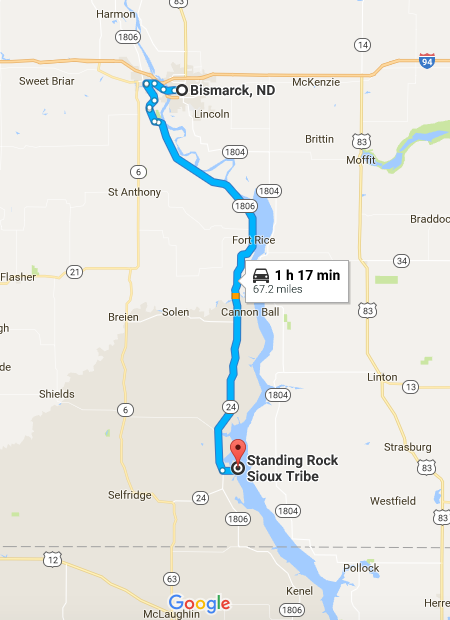Two Tweets Show the Big Double Standard in the Standing Rock Debate

By:
The ongoing protests against the construction of a major oil pipeline in North Dakota have drawn global attention. The Standing Rock Sioux Tribe opposes plans for the $3.7 billion Dakota Access Pipeline over concerns that leaks or ruptures could poison the nearby reservation's water supply. The four-state pipeline would cross the Missouri River about a half mile from the reservation and pass through Lake Oahe, an important water source for the community.
 Twitter/@EduSamani - twitter.com
Twitter/@EduSamani - twitter.com
Construction of the pipeline is continuing despite the tribe's concerns, and two viral tweets suggest a double standard in the fight over the pipeline. Twitter user @suntzufuntzu pointed out that the Standing Rock Sioux were not the first to worry about the pipeline's potential impact on water.
An earlier plan put the pipeline near Bismarck, North Dakota.
The Bismarck Tribune reported in August that an early proposal for the DAPL planned to cross the Missouri river north of Bismarck, North Dakota instead of near the Standing Rock Sioux Reservation.
The U.S. Corps of Army Engineers evaluated the plan and found that the route was too close to Bismarck's well water supply and the homes in the community.
The route through Bismarck would have also been 11 miles longer, and passed through more roads and wetlands. The route would have passed through a "high consequence area," which is an area deemed to have significant negative consequences in the event of a pipeline spill.
 Google Maps - google.com
Google Maps - google.com
In September of 2014 the plan was changed to put the pipeline near the reservation instead, and the Corps issued a permit for that plan, according to the Tribune. The Corps decided that the risk to reservation's water supply was low.
“Given the engineering design, proposed installation methodology, quality of material selected, operations measures and response plans the risk of an inadvertent release in, or reaching, Lake Oahe is extremely low,” the Corps wrote in its decision, according to the Tribune.
But the Standing Rock Sioux Tribe says their water would be in danger.
The pipeline would pass through North Dakota's Lake Oahe, which is a sacred burial site for the tribe and their major source of drinking water, according to Business Insider.
"The main reason it's such a big deal here is that it's going to affect our water supply," Aries Yumul, an assistant principal at a nearby school district and water protection activist told Business Insider.
Since 1995, there's been more than 2,000 "significant accidents" with oil pipelines, averaging about 100 accidents a year, according to the Chicago Tribune.
